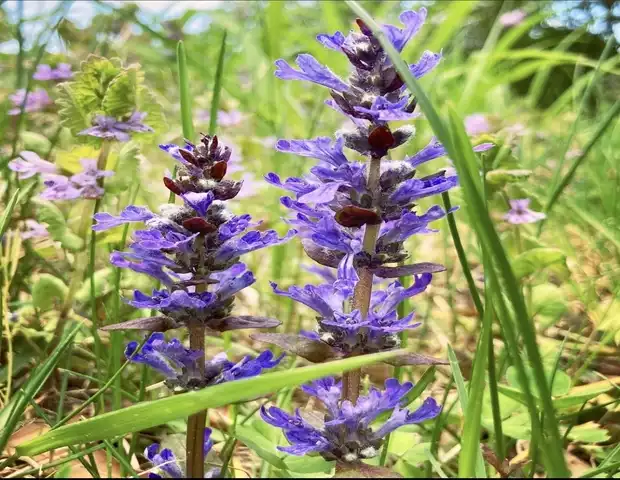ajuga turkestanica
Ajuga turkestanica is a perennial herb. It derives its name from the fact that it contains a powerful ecdysteroid called turkesterone. Ecdysterones are a group of plant sterols that have a steroid-like effect on the human body.
This plant has been used in traditional medicine to treat fevers, toothaches, malaria, high blood pressure, diabetes, and gastrointestinal disorders, as well as antifungal, anti-inflammatory agents etc.
Athletes and bodybuilders have used Ajuga turkestanica as an anabolic steroid because it contains phytoecdysteroids. Many bodybuilding supplements containing turkesterone can be found on the Internet turkestanica is known to contain several bioactive compounds and has been used in traditional medical approaches to heart disease as well as stomach and muscle aches
ajuga turkestanica in skincare
Extracts of Ajuga turkestanica formulations were particularly active in regulating and/or improving the functionality of aquaporins AQP3. It can be combined with other ingredients and it has good shelf stability. Unfortunately, only a limited number of brands contain this extract and it is expensive.
What are aquaporins?
Aquaporins (AQPs) are integral membrane proteins that facilitate water transport across cell membranes in several organs, including the skin, brain, eyes, digestive tract etc. In mammals, there are Thirteen isoforms of aquaporins (AQP 0–12).
Of these, there are two functional subtype classifications: AQPs 1, 2, 4, 5, and 8 conduct only water, and AQPs 3, 7, 9, and 10 transport water and other substances including glycerol and urea. AQP-3 is permeable to water and glycerol is a water transport channel known to transport water and glycerol between cells.
It is the main water transport channel in the human epidermis(outermost layer of the skin). The function of AQP-3 was shown to be increased by A. turkestanica extract.
Glycerol acts as a humectant( i.e., retains/prevents moisture) thereby facilitating hydration of the stratum corneum.
Stratum corneum: The stratum corneum refers to the outermost layer of the epidermis, which is itself the outer layer of the skin.
Studies conducted in mice have shown that defects in Defects in AQP-3 lead to dry skin, reduced hydration in the stratum corneum and epidermal glycerol content, followed by diminished elasticity and impaired skin barrier recovery.
Such findings underscore the important role of glycerol in cutaneous hydration. AQP-3 contributes to the transport of water, glycerol and solutes between skin cells(keratinocytes).
Dumas et al. note that the role of AQPs in hydrating the living layers of the epidermis where keratinocyte(skin cells) differentiation occurs and in barrier development and recovery suggests that they are significant protein targets for improving the quality and resistance of the skin surface as well as improving ageing- and UV-induced dry skin.
Topical uses
Patented extracts of A. turkestanica were shown to have sufficient ecdysteroids and other active ingredients to improve the differentiation of keratinocytes (skin cells), thus facilitating skin hydration and yielding antiaging effects.
Researchers observed that Ajuga turkestanica extracts are especially effective in regulating epidermal water and glycerol transport, achieving improved hydration of the basal layer by working in concert with or enhancing aquaporin-3 (AQP-3).


